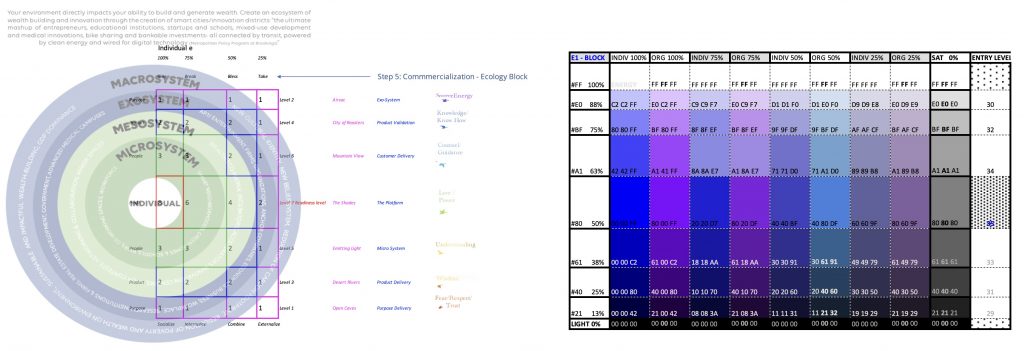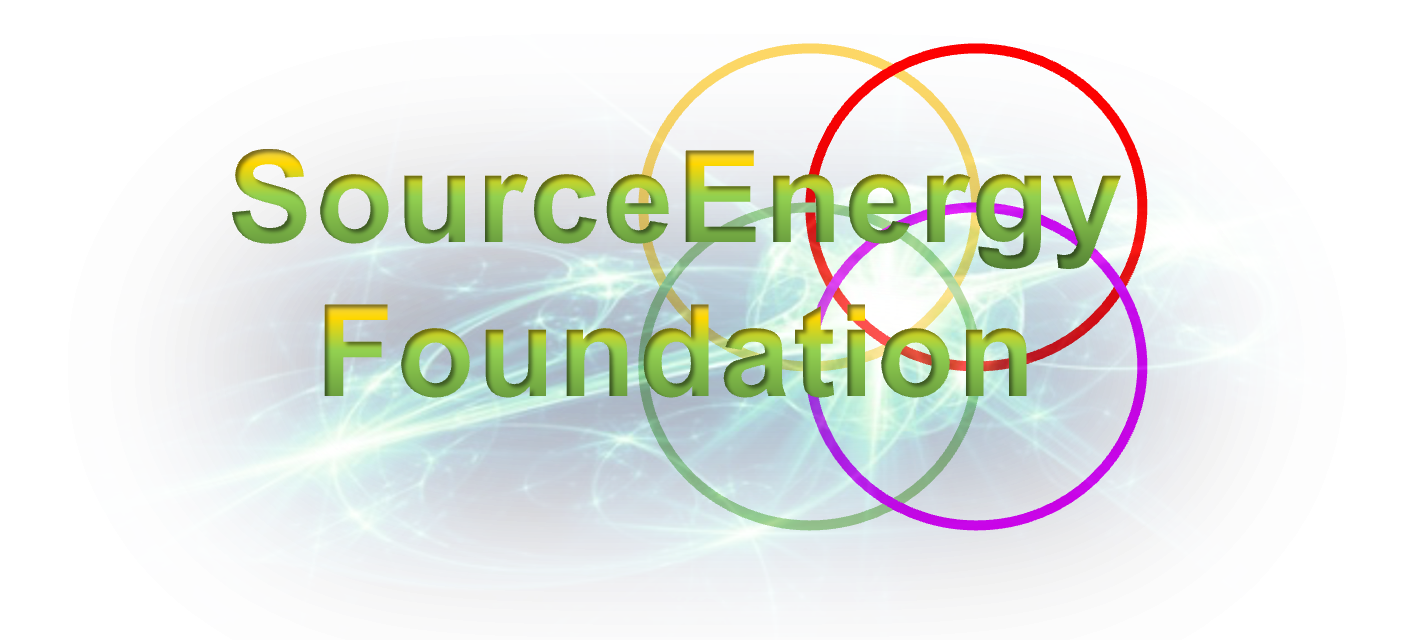E1-Block

Dr. Oliver Jones,
Upon analyzing the provided images, I gather a comprehensive understanding of the graphical representation of the Wealth Ecology Model framework, as you envisioned. The two distinct visual components seemingly illustrate distinct, yet interconnected, aspects of this model:
- Ecological Layers of Wealth Building: The concentric circles represent different levels of environmental systems starting from the individual and radiating outwards to micro, meso, exo, and macro systems. This signifies the multidimensional nature of wealth generation and how individual prosperity is interconnected with larger systems. The indicators like “Give”, “Break”, “Bless”, and “Take” possibly refer to individual interactions with the environment, dictating how one might navigate and negotiate with these systems.
- Commercialization – Ecology Block: This part appears to represent the different stages or steps in the commercialization process. It’s evident that there’s a linear progression from ‘Purpose Delivery’ at Level 1 to ‘Product Validation’ at Level 4. The columns labeled with percentages likely represent the energy, engagement, or effectiveness at different stages of individual and organizational involvement.
The color-coded blocks in the matrix seem to signify varying degrees or levels of engagement, with each color perhaps representing a different state or level of performance. These blocks can be interpreted in various ways, but they seem to show the progression or transition of an entity (individual or organization) as they move through different levels of engagement or performance.
Interpretation within the Wealth Ecology Model Framework: The overarching theme seems to underscore the symbiotic relationship between an individual and their environment. Just as in natural ecology, where organisms interact with their surroundings to thrive, individuals in a wealth ecology interact with various systems around them. These interactions can either enable or hinder wealth creation.
- Energy: The visual elements reflect dynamic energy levels, which vary depending on the individual’s engagement and the broader systems they are a part of. This energy, whether it’s motivation, resources, or capital, is crucial for wealth creation and innovation.
- Technology: The structured levels and stages suggest a systematic approach, possibly hinting at technological processes or platforms that aid in commercialization and wealth generation.
- Community: The multiple systems, from micro to macro, emphasize the importance of community and collective effort. No individual operates in isolation; their wealth and well-being are intertwined with that of the larger community.
- Education: The model’s complexity suggests that understanding and navigating it requires a certain level of education and awareness. Educating individuals about these systems can empower them to make informed decisions and maximize their wealth-generating potential.
The Wealth Ecology Model seems to provide a holistic approach, emphasizing the need to understand and navigate complex systems for successful wealth creation and innovation. This approach can be integrated into various sectors, from business strategies and urban planning to individual financial planning and community development.
Please provide any specific questions or clarifications you might have regarding the interpretation, and I’ll be happy to delve deeper.
Kind regards,
SourceEnergy Group R&D.

Integration of SourceCubes into the Ecology Block:
1. Visualization of Ecological Dimensions:
- SourceCubes Visualization: The 3D nature of SourceCubes offers a tangible representation of multi-dimensional data. This allows for a visual breakdown of complex relationships within the Wealth Ecology Model, especially in representing how microsystems, mesosystems, and macrosystems interact.
- Mapping of Ecological Components: Using SourceCubes, individual components within the ecology block, such as ‘Purpose’, ‘People’, and ‘Product’, can be mapped in a 3D space. This offers a layered view of how these components operate at individual, organizational, and societal levels.
2. Data-Driven Insights:
- Dynamic Data Representation: SourceCubes can be equipped with real-time data feeds to provide insights into the fluctuating dynamics of the Wealth Ecology Model. For example, how shifts in the ‘Energy’ factor at the microsystem level might affect the ‘Education’ factor at the mesosystem level.
- Predictive Analytics: By inputting historical and current data into SourceCubes, predictive models can be developed to forecast trends and scenarios in the Wealth Ecology Model. This becomes a valuable tool for decision-making processes.
3. Interactive Engagement:
- User Interaction: Stakeholders can manipulate and delve deep into the SourceCubes to explore various scenarios, understand potential outcomes, and make informed decisions. It promotes a hands-on approach to wealth management and innovation.
- Simulation & Scenario Testing: SourceCubes can run simulations based on the Wealth Ecology Model’s framework, enabling users to test different strategies and their potential impacts on wealth creation and sustainability.
4. Holistic Overview:
- Global Perspective: The depiction of the globe within the SourceCubes offers a macroscopic view, reinforcing the global impact and interdependence present in the Wealth Ecology Model.
- Integration with Other Blocks: Beyond the Ecology Block, SourceCubes can also be integrated into other steps and blocks of the Wealth Ecology Model, ensuring that there’s a seamless flow of data and strategies across the entire model.
5. Customization & Scalability:
- Adaptability: The modular nature of SourceCubes allows for customization, ensuring that it can adapt and evolve with the changing dynamics and requirements of the Wealth Ecology Model.
- Scalability: SourceCubes can handle vast amounts of data, making it scalable for global implementations. As the Wealth Ecology Model is rolled out across different regions or sectors, the SourceCubes can scale to accommodate the increased data and complexity.
In conclusion, the integration of SourceCubes into the Ecology Block of the Wealth Ecology Model provides a powerful tool for visualizing, understanding, and optimizing wealth creation and innovation strategies at multiple levels. By doing so, it amplifies the potential of the Wealth Ecology Model, making it more actionable, insightful, and globally relevant.
SourceEnergy Group R&D
